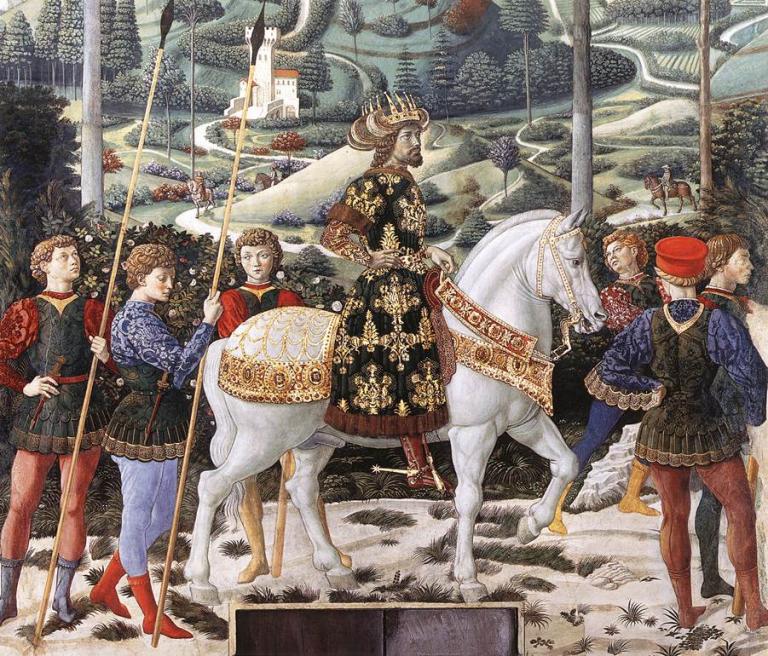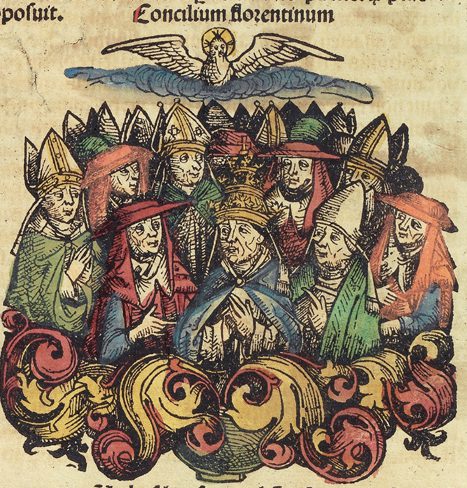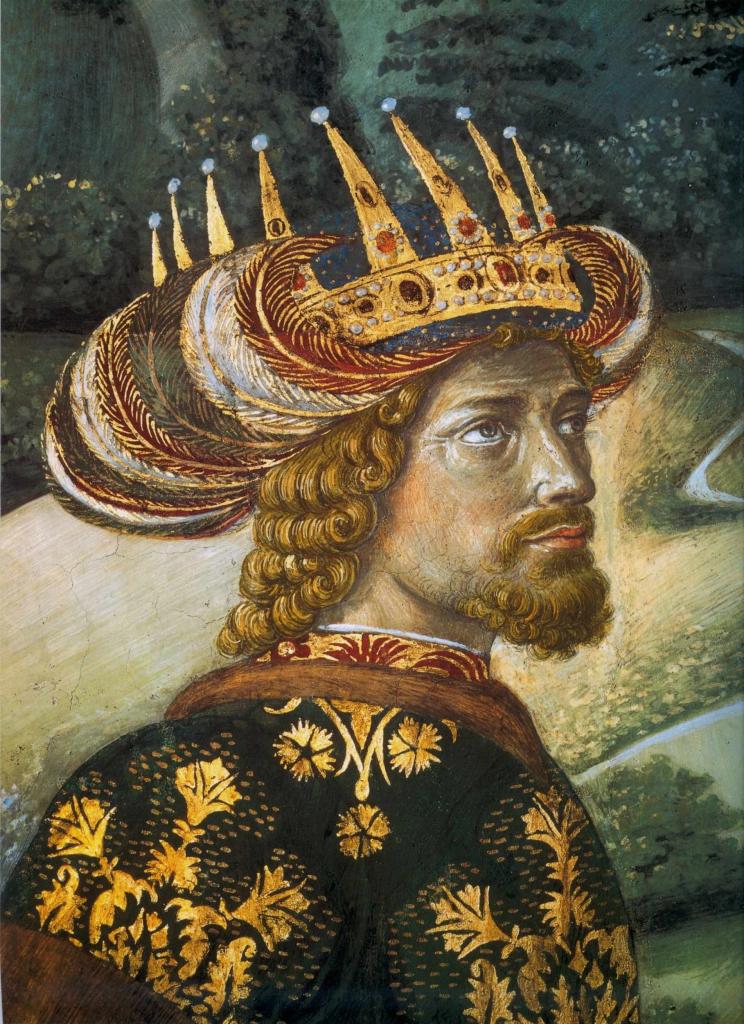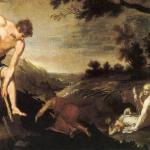Today’s post is about one very specific event, but it gets centrally to the way we write history, and how much attention we should give to key dates and people that at first sight seem to affect only the most rarefied elites. For centuries, access to the Classical languages of Greece and Rome has been a prime distinguishing feature of privileged elites in Europe and the West. Surely, then, we might think, tracing the origins of that cultural phenomenon must be very much an elite and “top-down” matter, of the kind that modern historians find highly suspect. I’ll be arguing, however, that in some cases, we really do need to know and care about such things. More to the point, this particular story is critical for writing and understanding the history of Christianity.
And yes, I will be referencing Blackadder. Be patient.
I have been working on Byzantine history, and have recently posted about the fall of that empire with the Ottoman capture of Constantinople in 1453, which is one of those dates that is familiar to anyone who knows anything about history. That event attracts many legends, one of which goes like this. When that empire fell, we are told, Greek scholars fled west in their droves, bringing the remains of ancient Classical learning, and the Greek language. That diaspora sparked the Renaissance, initially in Italy, and transformed the world.
There is a huge amount wrong with this picture. The Byzantines in 1453 had already lost so many of their cultural treasures through violence, warfare, and simple ruin and did not have that much of Antiquity to bring with them. From a modern perspective, we might also legitimately ask just why that Renaissance mattered in terms of how we write the history of a society. Yes, of course prosperity mattered, together with other crucial phenomena of the time such as the arrival of printing (from 1454). But what difference did it make to the experience of ordinary people that artists were painting such wonderful pictures for the consumption of super-rich patrons? And could anything be more Eurocentric?
Most fundamentally, the concept of “Renaissance”, “rebirth,” is highly debatable, and harks back to a vision of the whole European Middle Ages as a “Dark Age” where not much worthwhile happened. In fact, European culture and society was thriving quite happily in the fifteenth century, as it recovered from the disasters of the Black Death. In music and the visual arts, the “Renaissance” was flourishing magnificently well before those Greeks arrived. Already at the start of that century, Western scholars were applying very high standards of textual criticism to understand ancient writings.
For the sake of argument, let’s tell the story of that Renaissance without all the great art (as if we can). We still have one thing left which is the Greek language, which really was new to Latin Europe at that time. Of course, it was the preserve of intellectuals and elites, but think through what those elites did with that new prize. Among countless other things, they learned to read the New Testament in Greek, and to rediscover the meanings of that text as they had been lost in the Latin West for a millennium. Without that epochal change, there would not have been the critical ferment that made the Reformation. No Greek, no Erasmus. No Erasmus, no Luther. No Greek, briefly, then no Reformation and no Protestantism. No modern Christianity in anything like the form in which we know it.
So yes, what those notorious Dead White European Males were doing in the mid-fifteenth century really did matter enormously for the whole subsequent history of Europe, and much of the wider world as well. And we really do need to know about that story.
So do we have to mark 1453 as a central moment in our history after all? Well, not exactly. Another date is at least as attractive.
Here is the story. In the 1430s, the Byzantine empire was in a catastrophic state, facing the strong likelihood of imminent conquest. The emperor of the day, John VIII Palaiologos, did what several of his predecessors had done, and tried to get military aid from the great Western powers. To do that, however, he had to accept Papal demands for an end to the great schism that was dividing Catholic and Orthodox churches.
The emperor, John VIII planned a major diplomatic initiative, and he found an opportunity with the summoning of a great ecumenical council in the West. Normally, such councils are described fairly easily, because they met at a particular venue in a given year, and usually with a central focus on a controversial topic of the day: hence, historians readily tell the story of the Council that gathered at Nicea in 325, and its Christological debates. The new event was radically different, spanning as it did the years from 1431 through 1449, and in the process addressing a series of significant but scarcely related issues. It also relocated on several occasions, variously convening at Basel, Ferrara, Florence, and Lausanne. The reconciliation with the eastern churches is generally remembered as marking the “Council of Florence” because that is where it happened to be in 1438-1439. The emperor attended personally, as did the patriarch, and some seven hundred Byzantine dignitaries, and in 1439, east and west agreed on a formula for reunion, which is known as Laetentur Caeli.
The details of that event matter little for present purposes, and in fact the union was bitterly opposed in Constantinople. Nor did the union actually provide any military boost that might have saved the empire, which persisted little more than a decade beyond that tainted agreement. The real importance of Florence was that it brought all those Greeks to the west, some of whom stayed in Italy, where they began the teaching of Greek language and philosophy. This was not a totally new phenomenon, as the scholar and diplomat Manuel Chrysoloras had begun this process some decades previously. But the Council of Florence marked a decisive moment in the dissemination of Greek thought to the West.
Incidentally, the Council also created a unique visual record. Italian artists at this time were highly skilled in portraiture, and they found a wonderful opportunity in all those eastern dignitaries, with their exotic costumes. For the first time, we actually have a superb visual record of what the elites of that continuing “Roman Empire” actually looked like in its closing phase. Here is the emperor John VIII himself – in fact, the last but one of all the Roman emperors, in the fourteen century line of incumbents dating back to Augustus:
That Greek contingent included some really towering figures. The great guiding force in Byzantine intellectual life at that time was the very radical philosopher Gemistos Plethon, who will be the subject of a separate post. Plethon taught in Florence, where he attracted the patronage of the Medici family, and served as an inspiration to some of the Italian intellectuals of the period, who called him a Second Plato. Contrary to legend, he did not actually found a “Platonic Academy” there, but his influence on the emerging world of Renaissance Humanism was very powerful.
Plethon’s pupils were well represented at Florence. One was the Metropolitan Bessarion, a Neoplatonic scholar who was expert in mathematics and the sciences of the time. He became a Cardinal of the Catholic church in 1439, and he made his house in Rome a salon for very high caliber Greek scholars. I won’t begin to list them all, but some of the most influential figures of the era included George of Trebizond, Theodore Gaza, Janus Lascaris, and John Argyropoulos.
After the Council of Florence, no would-be scholar could plausibly claim that status without a good knowledge of Greek, and that lesson was soon learned by the universities across Europe. Add to that the high quality textual criticism then in vogue, and the collection and preservation of manuscripts – not last by Pope Nicholas V (1447-1455). On his death, his library consisted of 824 Latin manuscripts, and a stunning 352 Greek. Bessarion himself came very close to succeeding him as Pope, although that never happened. By the last quarter of the century, the printing of Greek texts was becoming a major enterprise, appealing to an ever-swelling market.
Inevitably, sooner or later, scholars would be applying the insights they had gained from studying Classical texts to the New Testament, to reconstruct its most ancient Greek forms, and as they did so, they would note the huge gaps that existed with the conventional understandings they had from the Church’s approved Latin versions. An intellectual and spiritual revolution was going to happen, although it was far from clear whether it could be contained within the structures of the established church. The coming of printing meant that the revolution would be publicized.
The classic television series Blackadder is an endlessly rich source for quotations, and historians struggle to avoid returning repeatedly to that well. I will not resist the temptation. I recall the despairing Edmund Blackadder telling his faithful servant Baldrick that “Yes, to you, the Renaissance was just something that happened to other people, wasn’t it?” Historians of Christianity should not repeat that mistake. They really need to know about 1438-39 and the long term consequences.
As to sources, I return to an old enthusiasm of mine here. The literature on the Renaissance is vast, as is that on Late Byzantine culture. But you can still learn a massive amount from the works of M. R. James, the legendary author of superb ghost stories, who was also a first class scholar and antiquary. His scholarly endeavors were written over a century ago, not least a brilliant essay he wrote on The Wanderings and Homes of Manuscripts (1919), which can be downloaded full text. Yes, I know James made lots of small errors, but they detract not a whit from the overall achievement.
And there is another treasure. In the late nineteenth century, Lord Acton envisaged a grand multi-volume Cambridge Modern History, which eventually appeared in fourteen volumes, from 1902 onward. Although the scholarship has obviously dated, we can still find great value in M. R. James’s chapter in the first volume, on “The Christian Renaissance.” As this is long out of copyright, it has been posted online in full text. Ditto for Sir Richard Jebb’s chapter on “The Classical Renaissance.” I say these are “chapters,” but if you just take James and Jebb together, you have almost 50,000 words of text, not to mention a further 23,000 on the “Wanderings and Homes of MSS.” Modern readers will enjoy James’s insistence on writing readable and accessible prose, without descending into academese. I cherish his remark that “We have no right to inflict a complete Patristic bibliography on our readers.”
If you want to see how the West discovered Greek, there are few better places to begin.
Also on Byzantine matters, I am happy to announce my forthcoming book A Storm of Images: Iconoclasm and Religious Reformation in the Byzantine World (Baylor University Press). Now available for pre-order!
















